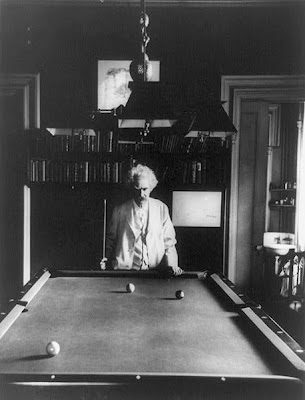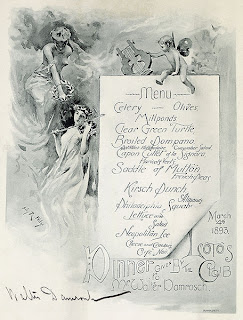Elinor Fettiplace née Poole (1570-1647) was born 12 years into the reign of Elizabeth the 1st. What the Poole family did well was arrange advantageous marriages that increased their land and fortunes, took positions that had hefty benefits and endeared themselves to important members of the nobility who responded generously to their ministrations. These talents took them very far very fast.
So far that Elinor’s grandfather, Sir Giles Poole (the Patriarch at the time) had his heart set on creating a mansion to rival his Thynne relations at Longleat (where he had been a retainer 30 years before) as befitting his station in the world but died before it could be finished. Sir Giles did well by his granddaughter, Elinor, leaving a lusty dowry for her marriage to Richard Fettiplace in 1589. The Fettiplaces had probably been selected for their ancient pedigree (at least back to William the Conquerer in the 11th century) and large land holdings but they had fallen onto hard times in the current generation. The Pooles made life a little easier for them as part of the marriage agreement in exchange for some acreage.
Elinor and her husband moved to one of his family holdings, a Norman Manor house at Appleton where she raised 5 children and lived with an extended family. Her husband Richard was knighted through her family connections in 1601 (possibly as a result of a meeting with Queen Elizabeth at an enormous wedding celebration for Henry Somerset, Lord Herbert in 1600).
In 1604, Elinor Fettiplace put together a small leather-bound book of recipes, cures and advice that was discovered nearly 400 years later by a descendant, playwright John Spurling and was brought to life in a book by his wife Hilary -- herself a theatre critic, editor and author. Spurling’s book was aptly named Elinor Fettiplace's Recipe Book .
Spurling found Elinor’s work inspirational and full of great recipes. She did a lot of legwork to remake the old recipes while still providing the originals so reinterpretation was possible (which I am thankful for.) In the intervening 20-odd years since the book was published, many ingredients that were impossible to find then are now available so the recipes can be made as written (still no musk though!).
Fettiplace’s work was one of the first books of its kind that we know of, handwritten by a very literate, well-to-do woman (well actually for her… a secretary most likely did the writing). She outlived 2 husbands and lived to be nearly 80… a fine old age for the time.

Many of the recipes came from powerful friends and famous neighbors like Sir Walter Raleigh (she was related to his brother, Carew Raleigh) who contributed some unusual recipes from wondrous new produce obtained on his forays to the New World in 1595 and again in 1616. Aside from tobacco water and syrup, he also shared recipes for sweet potatoes that were brand new imports.
The sweet potato member of the Convolvulaceae family (related to morning glory, not the potato) was domesticated in South America at least 5000 years ago.
John Hawkins (ship builder and architect of the Elizabethan navy that triumphed over the much larger Spanish Armada in 1588) may have brought the sweet potato to England in 1565, but Elinor’s neighbor, Walter Raleigh, grew them after his visit to the new world in 1595. I would imagine that the sweet potato was as rare as a white Italian truffle when Elinor wrote her recipe book in 1604. Her recipe for the prized vegetable with rose and ambergris doesn’t seem so extravagant given the newness and scarcity of the New World vegetable. The combination is inspirational with the voluptuous texture of the sweet potato -- the rose perfumed syrup transforms the lowly potato completely by treating it like a fine preserved fruit.
Sweet Potatoes with Rose Syrup and Ambergris
1 pound sweet potatoes
1 pound sugar
1 c water (1/2 cup if using rose water)
2 drops Aftelier rose essence or ½ c rosewater
juice of 3 oranges
a pea sized piece of ambergris, grated or 1 t vanilla
Dried Rose Buds for garnish (optional)
Boil or bake the potatoes till cooked but not mushy. Remove the skin and then slice.
Heat the sugar with the water and rose until liquefied over a low heat, add the orange juice and simmer for 10 minutes. Skim and add the sweet potatoes and heat over a low flame for 20 min. Remove the potatoes. Put the hot liquid into the dish you are using to store/serve them in and add the rose essence or rose water. It is best done the day before so the flavors meld. Serve by warming the mixture (especially the syrup) and grate the ambergris over them (or add the vanilla).

“Boile your roots in faire water until they bee somewhat tender then pill of the skinne, then make your syrupe, weying to every pound of roots a pound of sugar and a quarter of a pint of faire water, & as much of rose water, & the juice of three or fowre oranges, then boile the syrupe, & boile them till they bee throughlie soaked in the syrupe, before you take it from the fire, put in a little musk and amber greece.”
I love ambergris and wanted to also use it for a special holiday celebration drink after being inspired by Meriton Latroon’s Punch by historical mixologist, David Wondrich in the NYT’s and in his new book, Punch: The Delights (and Dangers) of the Flowing Bowl.
Chest of Books says “Punch is of course from the Hindustani [character] signifying 5, from its five original ingredients, to wit, aqua vitae, rose water, sugar, arrack, and citron juice”, but the definition has widened a good deal in the passing years. I was noodling around in one of my favorite 19th century drink books, Cooling Cups and Dainty Drinks by William Terrington and found a recipe for special version of Negus… a warm port drink with ambergris that fit the bill perfectly and isn’t far from the spirit of the spiced wine Hippocras popular in England for hundreds of years. I think it would have pleased Elinor.
Chest of Books says “Punch is of course from the Hindustani [character] signifying 5, from its five original ingredients, to wit, aqua vitae, rose water, sugar, arrack, and citron juice”, but the definition has widened a good deal in the passing years. I was noodling around in one of my favorite 19th century drink books, Cooling Cups and Dainty Drinks by William Terrington and found a recipe for special version of Negus… a warm port drink with ambergris that fit the bill perfectly and isn’t far from the spirit of the spiced wine Hippocras popular in England for hundreds of years. I think it would have pleased Elinor.
My ambergris is from Ambergris Co. NZ , a fine reputable source of found ambergris ( I wrote about it HERE). It is such a haunting scent. I had wished I could wear it as a perfume as well as using it for cooking and drinking and EUREKA—now they are making the real deal in an ambergris perfume … a dream come true for Christmas (hint hint)! Added to the glorious scent of an old port… well, this is a special occasion drink and if you don’t know about great vintage port… you are missing something wondrous.
My favorite port quote came from a 1932 book by H. Warner Allen called The Romance of Wine that I’ve had since college. He reflected on the space left at the top of a port bottle by saying “ I have liked to fancy that the extra air space is given to vintage port rather as a small supply of food was provided for the guilty Vestal Virgin when she was being buried alive. Condemned to grow up in the most difficult of conditions with no external aid, the wine is given a little extra air to encourage it in its desperate strivings towards perfection…” on its journey to become what wine connoisseur Prof. Saintsbury called “our noblest legacy”. Come on, you have to admit, that is quite an image. He also says that an old port tastes of “molten gold and soft purples of antique tapestry”… with that reflection’s purple prose , I concur.
Negus is a wine punch, named after Col. Francis Negus who invented it in the early part of the 18th century during the reign of Queen Anne. The drink flows all around English literature from Jane Austen to the Bronte sisters to Dickens and in modern times with Patrick O’Brian and his Aubrey novels. It was usually port wine with sugar rubbed on lemon peel, lemon juice and nutmeg -- warming and popular for 100 or so years on both sides of the Atlantic. It often had a good deal more water in it than wine and by the mid-19th century was considered a good drink for children. In this version it’s a luxurious drink with a fine port made even more elegant with the sweet breath of ambergris tossed on its steaming wine-dark waters.
Excellent Negus for 4, based on a recipe from Cooling Cups
1 c port (I used a 1983 Warre Port from The Rare Wine Company but an LBV or good ruby will work, however, the better the port the better the drink )
1/3 to 1 c of water (your choice and it depends on the port used--I liked much less water)
juice and the grated peel of a ¼ lemon
pinch of grated nutmeg
sugar to taste ( I used 4 t)
Heat the liquids and add all the lemon and peel, nutmeg and sugar and pour in a glass (I preferred it with no lemon juice... just the peel).
Grate the ambergris over each serving while still hot… this releases the oils in the ambergris, it is not as effective when it cools. Then, inhale… the scent is magical. Ambergris is something you smell more than taste. Breathe deeply of the warm scented steam before you taste.

PS. Last weekend I went to a fabulous series of lectures and demonstrations at the Astor Center in NYC in a series called The Alchemy of Taste and Smell with such food luminaries as Harold McGee, Johnny Iuzzini, David Chang (Momofuku) Wylie DuFresne, David Patterson and master mixologist Audrey Saunders of Pegu Club. It was a celebration of the art of Mandy Aftel of Aftelier who makes the divine chef essences I so love to use. They have changed the way I think about food and are doing the same thing for chefs and drink masters all over the world. She has reestablished the connection between the perfumer’s art and cooking… a connection that existed for millennia (see Cosimo de Medici’s apothecary Francesco Redi who created Jasmine Chocolate HERE ) . Do try some of her amazing scents… they will rock your world and your cooking for the holidays!
Thanks to Gollum for hosting Foodie Friday!






























































